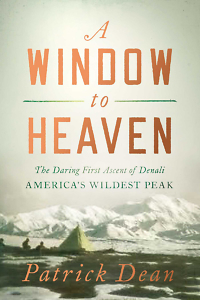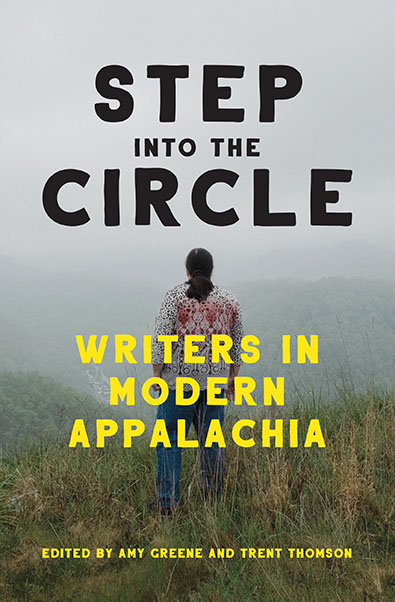A Muscular Christian
A Window to Heaven chronicles the first ascent of Denali by an Episcopal priest with a Tennessee past
In A Window to Heaven, Patrick Dean chronicles the adventurous life of Hudson Stuck, a Sewanee graduate and Episcopal priest. By turns a cowboy, telegraph lineman, literature professor, master of the Iditarod, bestselling writer, and social activist, Stuck was above all an advocate for the rights and dignity of native Alaskans for much of his adult life.
 As the book’s title suggests, Stuck — nearly 50 by then and Archdeacon of Alaska and the Yukon — along with a weary, sometimes contentious team, was the first to successfully summit North America’s highest peak, reaching the goal on June 7, 1913, after weeks of excruciating effort. The tale is thrilling in the tradition of climbing yarns, from Edward Wymper’s Scrambles Among the Alps in the Years 1860-69 to Jon Krakauer’s Into Thin Air, and yet the extraordinary mountain occupies slightly less than half of the book. Mostly, A Window to Heaven is the story of an extraordinary man.
As the book’s title suggests, Stuck — nearly 50 by then and Archdeacon of Alaska and the Yukon — along with a weary, sometimes contentious team, was the first to successfully summit North America’s highest peak, reaching the goal on June 7, 1913, after weeks of excruciating effort. The tale is thrilling in the tradition of climbing yarns, from Edward Wymper’s Scrambles Among the Alps in the Years 1860-69 to Jon Krakauer’s Into Thin Air, and yet the extraordinary mountain occupies slightly less than half of the book. Mostly, A Window to Heaven is the story of an extraordinary man.
A steep and winding trail descends the Cumberland Plateau from the campus of Sewanee, the University of the South, to a spring that tumbles from the mouth of an appropriately named cavern: Wet Cave. Although presently closed due to its endangered bat population, Wet Cave has been a popular weekend destination for students from the Episcopal college, who for over a century burned their names onto its white walls and ceiling with candles and carbide lamps. One name that can still be read on the walls is that of Hudson Stuck, who attended the university from 1889-92, earning a degree in theology. Besides founding the university’s literary magazine, precursor of The Sewanee Review, Stuck was a varsity football player on a team that was then a national powerhouse.
In 1885, Stuck, then 22, had left his native England, arriving in West Texas “full of romanticism, seeking his own mountain to climb, pole to reach, or desert to traverse,” Dean writes. “On the edge of the frontier, he had found that, and more besides. Texas taught the youth from London to ride a horse, shoot a Winchester rifle, and navigate a rough and alien world by his wits.” By the time he earned a scholarship to Sewanee’s School of Theology, he had hiked the Grand Canyon and climbed Mount Rainier, among other outdoor pursuits. Dean writes:
 Stuck’s three years of seminary training had instilled in him a deep love for Sewanee, and for the steep trails and intricate caves of the university’s ten thousand acres, which would last the rest of his life, along with friendships and alliances forged at the university. In turn, Stuck would become one of Sewanee’s favorite sons, and be offered several faculty positions there, though none could lure him away from Alaska.
Stuck’s three years of seminary training had instilled in him a deep love for Sewanee, and for the steep trails and intricate caves of the university’s ten thousand acres, which would last the rest of his life, along with friendships and alliances forged at the university. In turn, Stuck would become one of Sewanee’s favorite sons, and be offered several faculty positions there, though none could lure him away from Alaska.
Patrick Dean, a freelance writer, lives in Monteagle and covers environmental issues, in addition to running a nonprofit called the Mountain Goat Trail Alliance. He also holds a master’s in theology from Sewanee, where he first researched the university’s famous graduate for his thesis. From Stuck’s college days onward, he was a prolific writer of journals, letters, and essays, eventually publishing five books and dozens of articles on his various wilderness exploits. Many of Stuck’s letters and journals were left to the university archives, along with his extensive personal library. After Dean completed his thesis, he continued combing through this collection, which eventually became the seed of A Window to Heaven, his first book.
Stuck traveled thousands of miles by dogsled in Alaska and the Yukon, not only ministering to remote groups but building schools and libraries. He subscribed to a 19th-century movement called Muscular Christianity, which, as Dean writes, was “a type of religion which valued physical strength, social action, and above all, grit.” Unlike other missionaries of the day, Stuck sought to understand and celebrate native traditions. He learned to speak local dialects, hunted and fished with native parties, and opposed efforts by other churches and governments to westernize people by shipping their children to government schools.
Stuck’s “bulldog grit” impressed another outdoorsman and future president, Teddy Roosevelt, eventually leading to a White House visit where Stuck advocated for Alaskan natives with the then-secretary of the interior. He made certain that Walter Harper, an Alaskan native, was one of the four men to reach the summit of Mount McKinley, and Stuck was the first to argue for officially changing the peak’s name to Denali, meaning “The Big One” in Athabascan — something that would not come to pass until 2015.
Prior to Stuck’s 1913 expedition, co-led by backcountry expert Harry Karstens, there had been several failed attempts to reach Denali’s summit, along with what Stuck considered two fraudulent claims by men who barely reached the mountain and never came near the peak. Stuck annotated both books by hand, writing on one “What rot” and “here or hereabouts the true narrative ends. This at 8,000 ft. on the glacier or a ridge not much above it, is the highest point reached.” On the title page of another, reproduced in a photographic insert in A Window to Heaven, Stuck wrote, “a fraudulent narrative of an ascent that was never made.” He was able to discredit these impostors because of his close relationship with the wilderness guides and native inhabitants of the region, who knew well what had — and had not — been accomplished.
The book’s title comes from a quote by the other Tennessean on Stuck’s team, Robert Tatum, a young Sewanee graduate from Knoxville who had also “done some climbing and caving on the Mountain” before coming to Alaska to train as an Episcopal priest. “It was like looking out of a window of heaven,” Tatum said of the experience of standing with Stuck and two others in the thin air above 20,000 feet.
Stuck’s colleagues at Sewanee and elsewhere often found him difficult, with a “sometimes brusque manner” and a constant need for action. Yet he also excelled in education, even tutoring a 16-year-old who traveled with the team and managed their base camp in Shakespeare and other authors. “There is much truth in the old primitive animism,” Stuck wrote of the people and land he celebrated. “It recognizes that the world and life are full of deep mysteries.”

Michael Ray Taylor is the author of Hidden Nature: Wild Southern Caves. He chairs the communication and theatre arts department at Henderson State University in Arkadelphia, Arkansas.kiu


